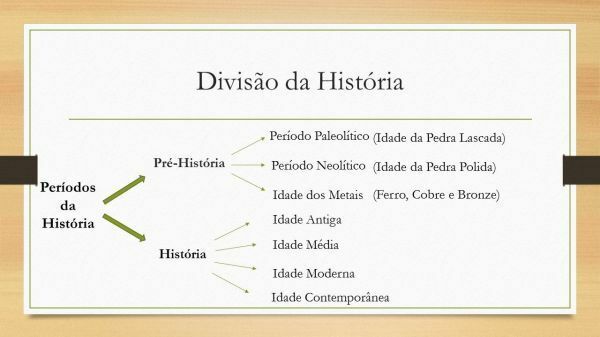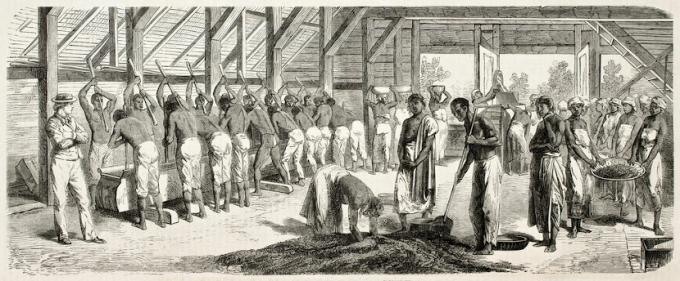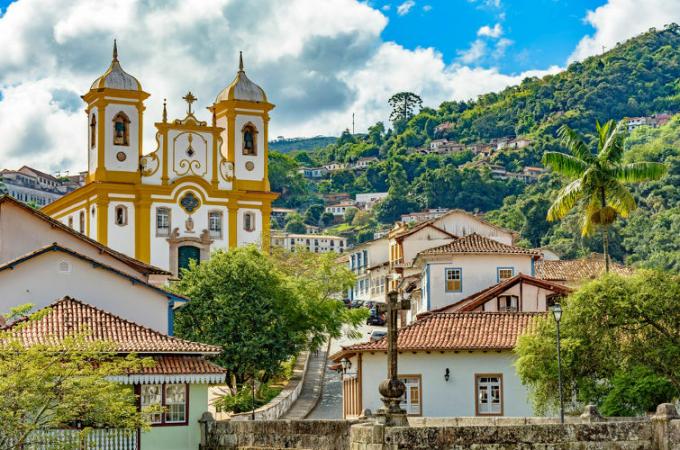THE Contemporary age determines a period of history that goes from 1789 to the present day. Remember that the term “contemporary” is associated with the current time, the present.
Thus, the contemporary age begins in the 18th century, where the French Revolution was the landmark that defined the beginning of this “era”, the contemporary era.
Since then, the world has undergone profound social, cultural, political and economic transformations.
Many historians discuss the end of this era, however, we are still part of the Contemporary Age or, as many prefer, Post-Modernity.
In such a way, several events after the French Revolution, which was based on the motto "Liberty Equality Fraternity”, were essential to change the worldview.
Therefore, they directly influenced the development of history in different parts of the planet: the independence of the Spanish and Portuguese American colonies.
Divisions of History
To better understand the historical epochs that humanity has gone through since its emergence, an explanatory table follows below.

Important Events in the Contemporary Age: Summary
Below is a chronology of the most important events that took place during the Contemporary Age in Brazil and in the world.
In the world
- French Revolution (1789) and the Enlightenment (from the 18th century in Europe)
- Napoleonic era and the French domination in Europe
- liberal rebellions, nationalism and unification of European countries (Italy and Germany)
- neocolonialism imperialist in Africa, Asia and Oceania
- US expansion and development and secession war (1861 and 1865)
- Industrial Revolution (18th and 19th centuries)
- Independence of Spanish American colonies It's from Haiti (XIX century)
- Avant-garde movements in art: cubism, Dadaism, surrealism, futurism, expressionism.
- 1929 crisis: New York Stock Exchange Crash
- First World War (1914-1918)
- Russian revolution (1917)
- Capitalism crisis and emergence of totalitarian regimes like Nazism, fascism, Stalinism, Francoism, salazarism
- Second World War (1939-1945)
- ÇOrganization of the United Nations - UN (1945)
- Universal Declaration of Human Rights (1948) by the UN
- Cold War (1945-1991) between the United States and the USSR
- Korean War (1950-1953)
- Space race and Arms Race
- Vietnam War (1964-1975)
- Development and Consolidation of Capitalism
- Fall of the Berlin Wall (1989) and the German reunification
- expansion of globalization, Imperialism, Terrorism and neoliberalism
- industrial and technological development
- growth of urbanization and population
- Environmental crisis (increase in global warming, greenhouse effect, etc.)
- Increased socioeconomic inequalities and prejudices (racism, xenophobia, etc.)
- cultural industry and mass culture
In Brazil
In Brazil, the Contemporary Age is marked by emancipatory movements, independence, the fall of the monarchy and the establishment of the Republic.
- Inconfidence or Conjuration of Minas Gerais (1789) in Minas Gerais
- Bahia Conjuration (1798) in Bahia
- Arrival of the royal family in Brazil (1808)
- Pernambuco Revolution (1817) in Pernambuco
- Brazil's political independence (1822)
- first reign (1822-1831) ruled by D. Peter I
- Creation of First Constitution of the country (1824) by Dom Pedro I
- Confederation of Ecuador (1824)
- Cisplatin War (1825-1828)
- Economic Crisis of the Empire and the Abdication of Dom Pedro I (1831)
- Governing Period (1831-1840)
- Socioeconomic problems, political and economic crisis
- cabin (1835-1840) in the northern region of the country
- Ragamuffin revolution (1835-1845) in the southern region of the country
- Malês revolt (1835) and Sabinada (1837-1838) in Salvador, Bahia
- Balaiada (1838-1941) in Maranhão
- second reign (1840-1889) and the government of Dom Pedro II
- beach revolution (1848-1850) in Pernambuco
- End of International Slave Traffic and the Eusébio de Queirós Law (1850)
- Abolitionism: Fight for the end of slavery in Brazil
- Abolitionist Laws: law of the free womb (1871), Sexagenarian Law (1885) and Golden Law (1889)
- Paraguay War (1864 and 1870) and the increase in the Brazilian external debt
- crisis of second reign
- Modernization and Industrialization in Brazil
- Proclamation of the Republic (1889) and the end of the parliamentary constitutional monarchy
- Provisional Government (1889 to 1891) ruled by Marshal Deodoro da Fonseca
- O Stranding (1890) and the financial reform
- First Constitution of the Republic (1891) which instituted the right to vote for those over 21
- Republic of the Sword (1891-1894) and the Military Governments: Deodoro da Fonseca (1891) and Floriano Peixoto (1891-1894)
- Republic of Oligarchies (1894-1930) and election of the first civilian president: Prudente de Morais (1894)
- Colonelism, patronage, halter vote and electoral fraud
- Governors Policy during the government of Campos Sales (1898-1902)
- Coffee with Milk Policy and the alternation in power (Minas Gerais and São Paulo)
- Immigration and Industrialization: social and economic changes in the country
- Straw War (1893-1897) in the northeastern hinterland
- Contested War (1912-1916) in the south of the country
- Cangaço in the northeast of the country (19th and 20th centuries)
- Vaccine Revolt (1904) and the Revolt of the whip (1910) in Rio de Janeiro
- Lieutenantism (1922-1926) and the overthrow of rural oligarchies
- Lieutenant Movement: Copacabana Fort Revolt (1922), São Paulo Revolt of 1924 and the About Column (1925 to 1927)
- modernist movement and the Modern Art Week (1922)
- Revolution of 30 and the deposition of Washington Luís
- It was Vargas (1930-1945) and the government of Getúlio Vargas
- Constitutionalist Revolution of 1932
- 1934 Constitution: labor rights and the secret and female vote
- Communist intent (1935) and the Cohen Plan
- The New State (1937 to 1945) and the authoritarian government of Getúlio Vargas
- Democratic Period (1946-1964) and the 1946 Constitution
- It was JK (Juscelino Kubitschek): developmentalism and optimism between 1956 and 1960
- Construction of Brasiliain 1960
- Military Governments (1964-1985)
- Instructional Act number 5 (AI-5), in 1968
- The country's redemocratization process: union movement, Amnesty Law, End of bipartisanship
- Direct now (1983-1984)
- cross plan (1986), created during the government of José Sarney
- Federal Constitution of 1988
- Collor government (1990-1992), the accusations of corruption and the Impeachment
- Real plan (1993) during the government of Itamar Franco
- FHC Government (Fernando Henrique Cardoso): economic reforms and social advances
- Lula government (2003-2010) and allegations of corruption
- Dilma Government (2011-2016)
- government fear
Read more:
- Old age
- Middle Ages
- Modern age
- Counting Time in History


